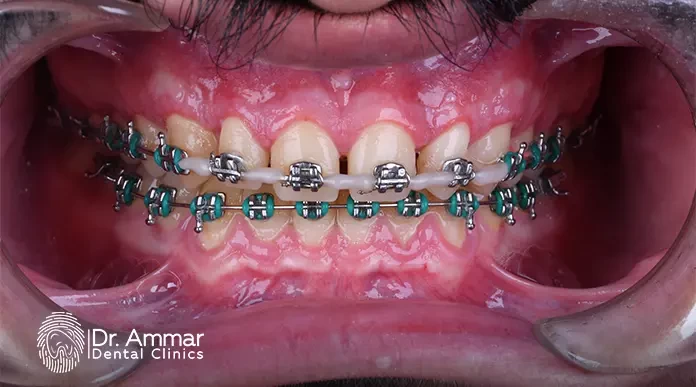Orthodontics
Orthodontics—also known as dentofacial orthopedics—is a specialized branch of dentistry focused on diagnosing, preventing, guiding, and correcting misaligned teeth and irregular bites (malocclusion). Its ultimate aim is to create a healthy bite, allowing teeth to function properly and comfortably while enhancing appearance.
Why Orthodontic Care Matters
Misaligned teeth and bite problems—such as crowding, spacing, overbites, underbites, and crossbites—can impact your oral health significantly. These conditions can:
-
Make chewing and speaking more difficult.
-
Increase the risk of tooth decay and gum disease due to challenges in cleaning.
-
Contribute to temporomandibular joint (TMJ) issues or uneven facial development.
Who Performs Orthodontic Treatment?
Orthodontic treatment is provided by orthodontists—dentists who complete an additional 2–3 years of specialized postgraduate training focused exclusively on tooth and jaw alignment. This specialized credentialing ensures they are equipped to diagnose, prevent, and treat dentofacial irregularities with expert precision.
What Treatments Are Available?
Orthodontists use a variety of appliances tailored to individual needs:
-
Braces: Traditional metal, ceramic, or self-ligating braces that use brackets and archwires to gently shift teeth over time.
-
Clear Aligners: Removable, transparent trays (e.g., Invisalign) that gradually reposition teeth—especially popular with adults.
-
Retainers and Functional Appliances: To maintain results and guide jaw alignment.
-
corrective jaw surgery: In severe cases, corrective jaw surgery may be necessary to improve function and aesthetics.
What Are the Benefits of Orthodontic Treatment?
Orthodontic treatment provides more than just a straight smile:
-
Improved oral function and easier hygiene.
-
Reduced risks of decay and gum disease.
-
Enhanced facial symmetry, speech, and comfort.
-
Lasting confidence and quality of life improvements.
Who Can Benefit?
Orthodontic care is effective for both children and adults. The American Association of Orthodontists recommends a screening by age seven to address potential issues early, but adults seeking treatment for lifelong misalignments or functional concerns are increasingly common.
Diagnostic Process
An orthodontic evaluation involves:
-
Reviewing dental and medical history.
-
Comprehensive clinical exam.
-
X-rays (often panoramic or cephalometric) and dental impressions to design personalized treatment plans.
Why Choose Expert Orthodontic Care?
Organizations like the American Association of Orthodontists (AAO) ensure orthodontists meet high standards in education, care ethics, and ongoing professional development.
Bringing It to Cairo: Your Orthodontic Care at Dr. Ammar Dental Clinics
While orthodontics focuses on health and function, selecting the right provider is equally important. At Dr. Ammar Dental Clinics in Cairo, experienced specialists combine advanced orthodontic techniques with personalized care. Using modern diagnostic tools and treatment options like braces and aligners, the clinic ensures optimal outcomes in a comfortable, patient-centered environment.

